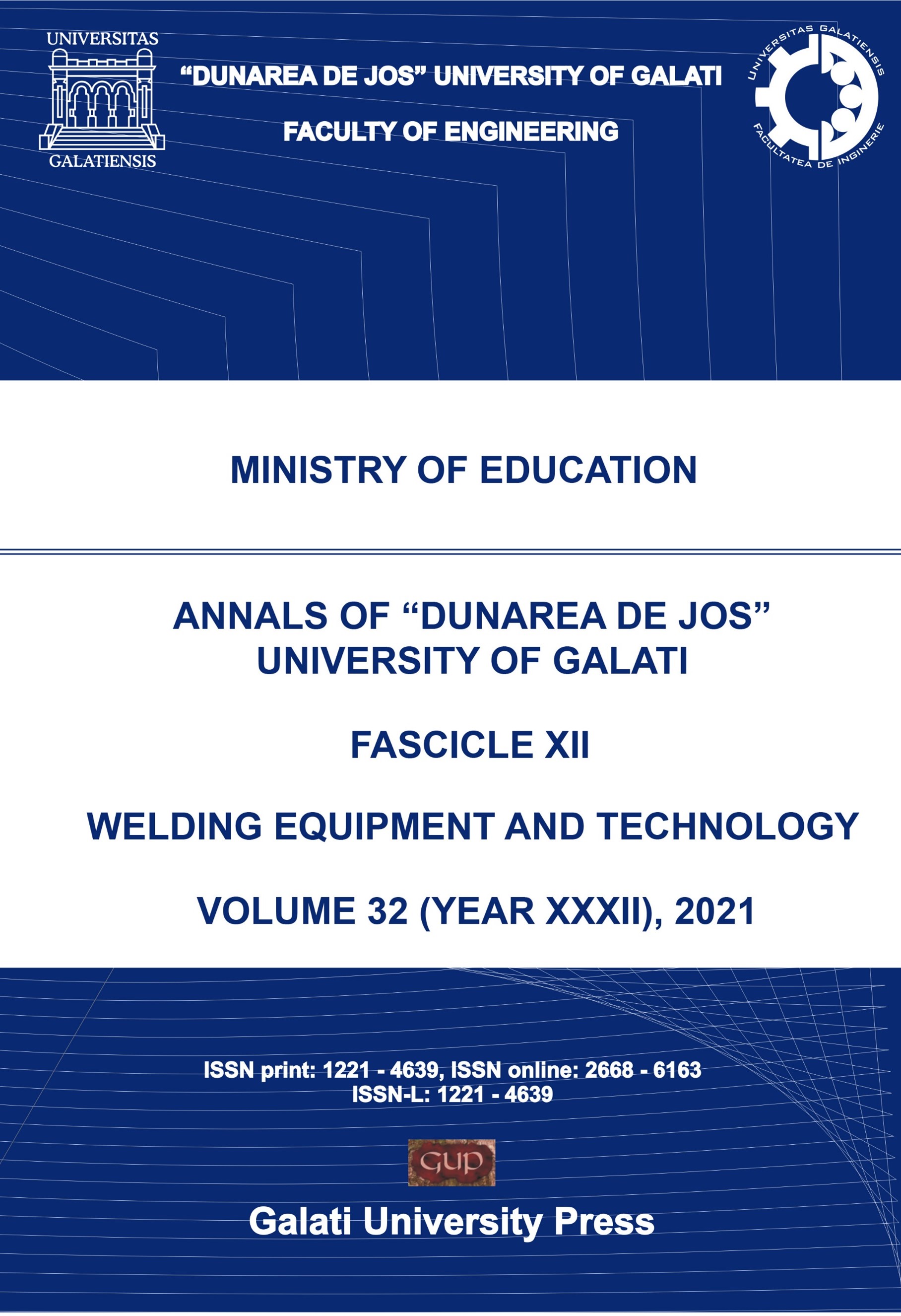Rotary Friction Welding and Dissimilar Metal Joining of Aluminium and Stainless Steel Alloys
Abstract
Friction welding (FW) is cost-effective, efficient, occupational safer and also eco-friendly in the absence of pollution, smoke, fume, and IR radiation during welding than conventional welding technologies. In this paper, the joining of aluminium AA6063 and steel SS304 dissimilar metal is explained with different faying surfaces and their SEM images of weld interface (WI), joint quality, tensile and yield strength, and the axial shortening are evaluated and compared. The joint quality factor of the experiment faying surface modification ‘E3’ was the maximum and about >100% with 236 MPa strength. The axial shortening was also less than 27 mm. The joint with hemispherical faying surface showed ‘U’ shaped WI and the joint with taper faying surface showed ‘V’ shape WI. So, the cross-sectional area of WI can be increased and the strength also increased. FW yields very high strength, low-stress weld with no weld defects such as porosity, voids etc. Here, in most cases, the joint strength is equal to base metal strength and it can avoid fastening to join two metals. FW has a minimal and narrow heat-affected zone (HAZ) of few microns size that differentiates FW from other welding techniques. The grain size of HAZ is directly proportional to the heat input during welding. During fusion welding of dissimilar materials, a lot of intermetallic compounds are formed at the weld interface and that will lead to poor strength of the welding because they have different chemical and mechanical qualities; therefore FW is a good choice for joining dissimilar metal rods as the intermetallic compounds can be reduced by FW.
Downloads
Papers accepted for publication become the copyrighted property of the Annals of "Dunarea de Jos" University of Galati, Fascicle XII, Welding Equipment and Technology. No part of the publication may be reproduced or transmitted in any form, or by any means, electronic or mechanical, including photocopy, recording, or any information storage and retrieval system, except in limited quantities for the non-commercial purposes of scientific or educational advancement, without permission in writing from the Editorial Board.


